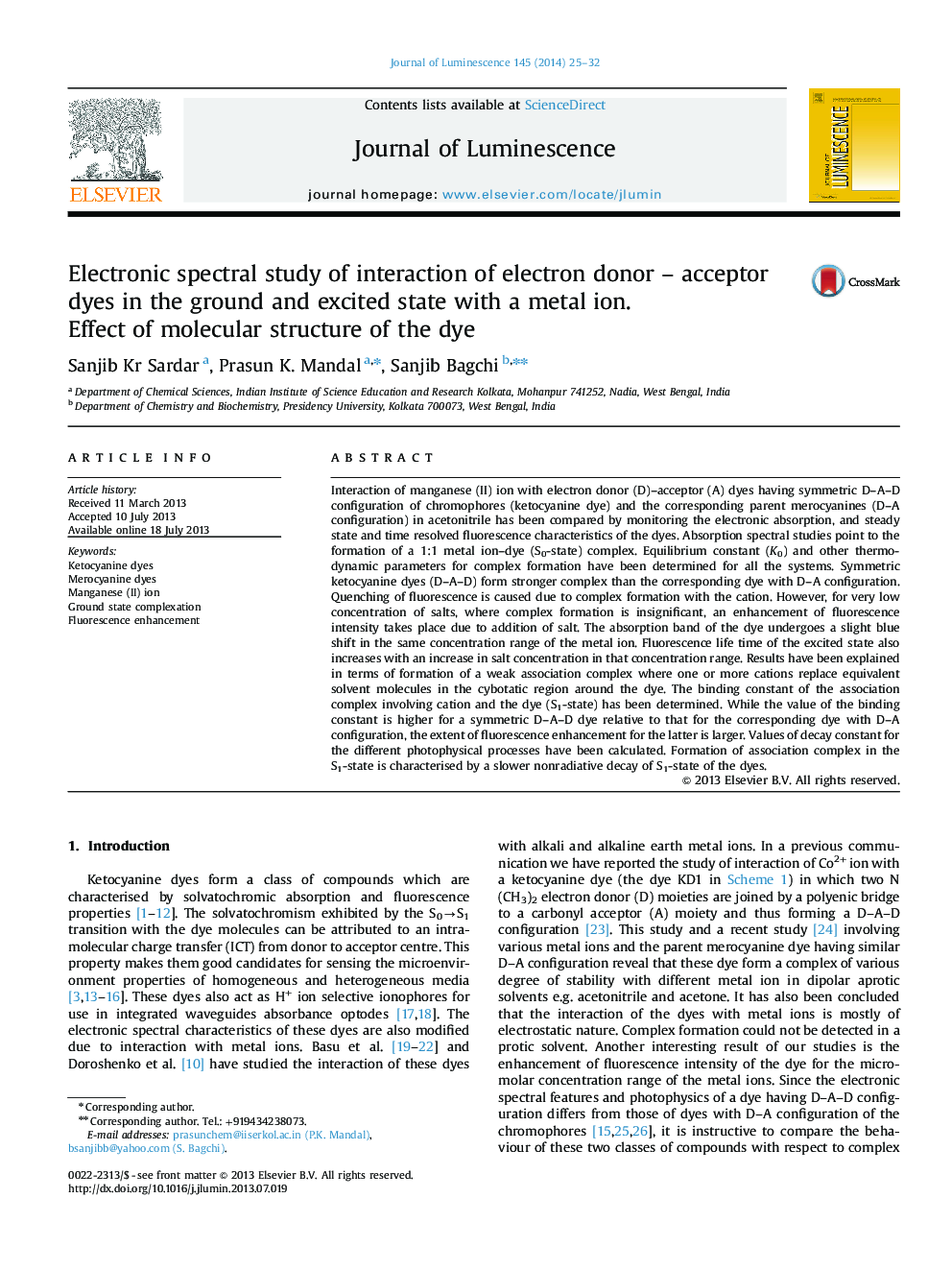| Article ID | Journal | Published Year | Pages | File Type |
|---|---|---|---|---|
| 5400132 | Journal of Luminescence | 2014 | 8 Pages |
Abstract
Interaction of manganese (II) ion with electron donor (D)-acceptor (A) dyes having symmetric D-A-D configuration of chromophores (ketocyanine dye) and the corresponding parent merocyanines (D-A configuration) in acetonitrile has been compared by monitoring the electronic absorption, and steady state and time resolved fluorescence characteristics of the dyes. Absorption spectral studies point to the formation of a 1:1 metal ion-dye (S0-state) complex. Equilibrium constant (K0) and other thermodynamic parameters for complex formation have been determined for all the systems. Symmetric ketocyanine dyes (D-A-D) form stronger complex than the corresponding dye with D-A configuration. Quenching of fluorescence is caused due to complex formation with the cation. However, for very low concentration of salts, where complex formation is insignificant, an enhancement of fluorescence intensity takes place due to addition of salt. The absorption band of the dye undergoes a slight blue shift in the same concentration range of the metal ion. Fluorescence life time of the excited state also increases with an increase in salt concentration in that concentration range. Results have been explained in terms of formation of a weak association complex where one or more cations replace equivalent solvent molecules in the cybotatic region around the dye. The binding constant of the association complex involving cation and the dye (S1-state) has been determined. While the value of the binding constant is higher for a symmetric D-A-D dye relative to that for the corresponding dye with D-A configuration, the extent of fluorescence enhancement for the latter is larger. Values of decay constant for the different photophysical processes have been calculated. Formation of association complex in the S1-state is characterised by a slower nonradiative decay of S1-state of the dyes.
Related Topics
Physical Sciences and Engineering
Chemistry
Physical and Theoretical Chemistry
Authors
Sanjib Kr Sardar, Prasun K. Mandal, Sanjib Bagchi,
